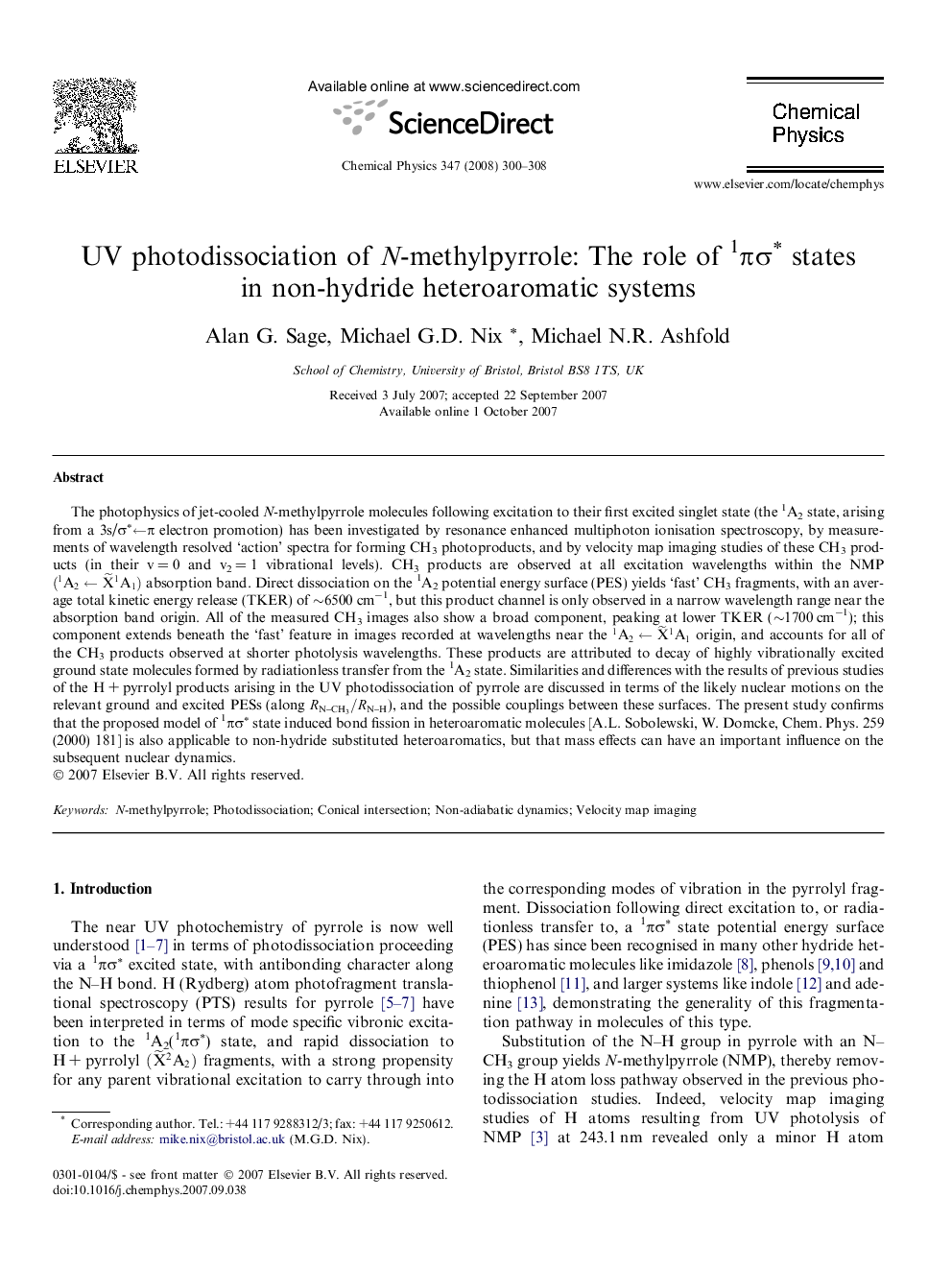| کد مقاله | کد نشریه | سال انتشار | مقاله انگلیسی | نسخه تمام متن |
|---|---|---|---|---|
| 5375895 | 1504311 | 2008 | 9 صفحه PDF | دانلود رایگان |
عنوان انگلیسی مقاله ISI
UV photodissociation of N-methylpyrrole: The role of 1ÏÏâ states in non-hydride heteroaromatic systems
دانلود مقاله + سفارش ترجمه
دانلود مقاله ISI انگلیسی
رایگان برای ایرانیان
کلمات کلیدی
موضوعات مرتبط
مهندسی و علوم پایه
شیمی
شیمی تئوریک و عملی
پیش نمایش صفحه اول مقاله

چکیده انگلیسی
The photophysics of jet-cooled N-methylpyrrole molecules following excitation to their first excited singlet state (the 1A2 state, arising from a 3s/ÏââÏ electron promotion) has been investigated by resonance enhanced multiphoton ionisation spectroscopy, by measurements of wavelength resolved 'action' spectra for forming CH3 photoproducts, and by velocity map imaging studies of these CH3 products (in their v = 0 and v2 = 1 vibrational levels). CH3 products are observed at all excitation wavelengths within the NMP (1A2âXâ¼1A1) absorption band. Direct dissociation on the 1A2 potential energy surface (PES) yields 'fast' CH3 fragments, with an average total kinetic energy release (TKER) of â¼6500 cmâ1, but this product channel is only observed in a narrow wavelength range near the absorption band origin. All of the measured CH3 images also show a broad component, peaking at lower TKER (â¼1700 cmâ1); this component extends beneath the 'fast' feature in images recorded at wavelengths near the 1A2âXâ¼1A1 origin, and accounts for all of the CH3 products observed at shorter photolysis wavelengths. These products are attributed to decay of highly vibrationally excited ground state molecules formed by radiationless transfer from the 1A2 state. Similarities and differences with the results of previous studies of the H + pyrrolyl products arising in the UV photodissociation of pyrrole are discussed in terms of the likely nuclear motions on the relevant ground and excited PESs (along RN-CH3/RN-H), and the possible couplings between these surfaces. The present study confirms that the proposed model of 1ÏÏâ state induced bond fission in heteroaromatic molecules [A.L. Sobolewski, W. Domcke, Chem. Phys. 259 (2000) 181] is also applicable to non-hydride substituted heteroaromatics, but that mass effects can have an important influence on the subsequent nuclear dynamics.
ناشر
Database: Elsevier - ScienceDirect (ساینس دایرکت)
Journal: Chemical Physics - Volume 347, Issues 1â3, 23 May 2008, Pages 300-308
Journal: Chemical Physics - Volume 347, Issues 1â3, 23 May 2008, Pages 300-308
نویسندگان
Alan G. Sage, Michael G.D. Nix, Michael N.R. Ashfold,